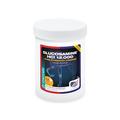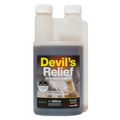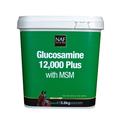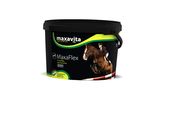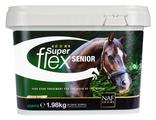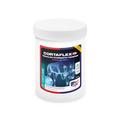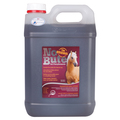What is arthritis?
Otherwise known as degenerative joint disease (DJD), arthritis is a progressive and irreversible condition affecting the articular cartilage in the joint.
Over time, repeated trauma (wear and tear) causes erosion of the cartilage that cushions the ends of bones within a weight-bearing joint. This is often the natural consequence of ageing where the cartilage and fibrous tissue thins, frays, loses some of its elasticity and is generally compromised.
When this happens, the joint will be able to withstand less pressure, absorb less shock and bear less weight, making it more susceptible to injury and strain. The joint bones themselves may also become misaligned, affecting movement and causing stiffness and pain.
What causes arthritis in horses?
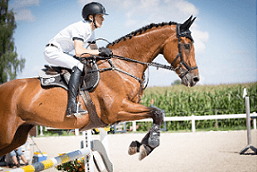 Horses over a certain age are more likely to show signs of arthritis. Around age 15, cell death within cartilage, fibrous tissue and bone escalates, which affects the integrity of the joint structures. A lifetime of absorbing shock and bearing weight takes its toll and the body’s mechanisms for repair slow down. When damage starts to occur faster than repair, a joint problem often follows.
Horses over a certain age are more likely to show signs of arthritis. Around age 15, cell death within cartilage, fibrous tissue and bone escalates, which affects the integrity of the joint structures. A lifetime of absorbing shock and bearing weight takes its toll and the body’s mechanisms for repair slow down. When damage starts to occur faster than repair, a joint problem often follows.
Unfortunately, age-related deterioration is hard to avoid completely, which is why it is helpful to incorporate a joint supplement into your horse’s diet early on. But age isn’t the only contributing factor in degenerative joint disease.
Horses that are strenuously exercised over hard ground are at greater risk of arthritis through repetitive trauma, just as horses that are poorly conformed will be relying on compensating joints to balance them. These are quickly weakened and become susceptible to injury and strain.
Septic or infective arthritis is usually caused by a penetrating wound introducing bacteria to the joint. The bacteria rapidly colonise there and trigger the body’s release of white blood cells. These release destructive enzymes to isolate and destroy the bacteria, however the joint lining (including articular cartilage and synovial membrane) is often destroyed in the process, which leads to the release of further enzymes, only exacerbating the cycle of damage.
What are the symptoms?
Arthritis is believed to be responsible for roughly 60% of all lameness, so if your horse is lame and over 15 years old, you might be right in thinking arthritis is to blame.
Lameness and reduced performance are typically the two biggest indicators of an arthritic horse. Joint swelling may also be evident, as well as discomfort when moving. This can usually be warmed out of, unless the arthritis is particularly bad.
When standing, you may notice an uneven distribution of weight (particularly in the hind legs) as your horse tries to relieve its discomfort.
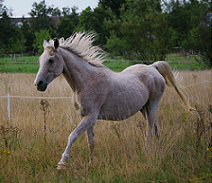 In horses with septic arthritis, the leg may feel particularly warm and swollen, as well as displaying the usual signs of infection. If your horse has had a traumatic injury near the joint, get it looked at right away, even in the absence of other symptoms.
In horses with septic arthritis, the leg may feel particularly warm and swollen, as well as displaying the usual signs of infection. If your horse has had a traumatic injury near the joint, get it looked at right away, even in the absence of other symptoms.
What's next for my horse?
Although arthritis is a progressive and untreatable condition, there are ways to reduce inflammation and pain and prevent further damage occurring. When given daily, a targeted joint supplement may help support the joint and ease discomfort, such as Cortaflex, Maxaflex or Synequin. Many vets recommend investing in a supplement like this, particularly in show and competition animals whose joints are placed under greater stress.
In your horse’s early years, you might want to consider how your horse is worked and the kind of terrain this happens on. Remember to always incorporate a warm up and cool down into every session to prevent friction occurring in the joint. Supportive boots and magnetic therapy may also be worth exploring if your horse is experiencing arthritis particularly badly.
If you have any questions or concerns about your horse’s joints, get in touch with your vet as soon as possible. The sooner arthritis is identified, the sooner you can relieve your horse’s pain and improve his mobility. If you have any comments on this topic, post them here or email me directly! [email protected]
Written by: Hannah

